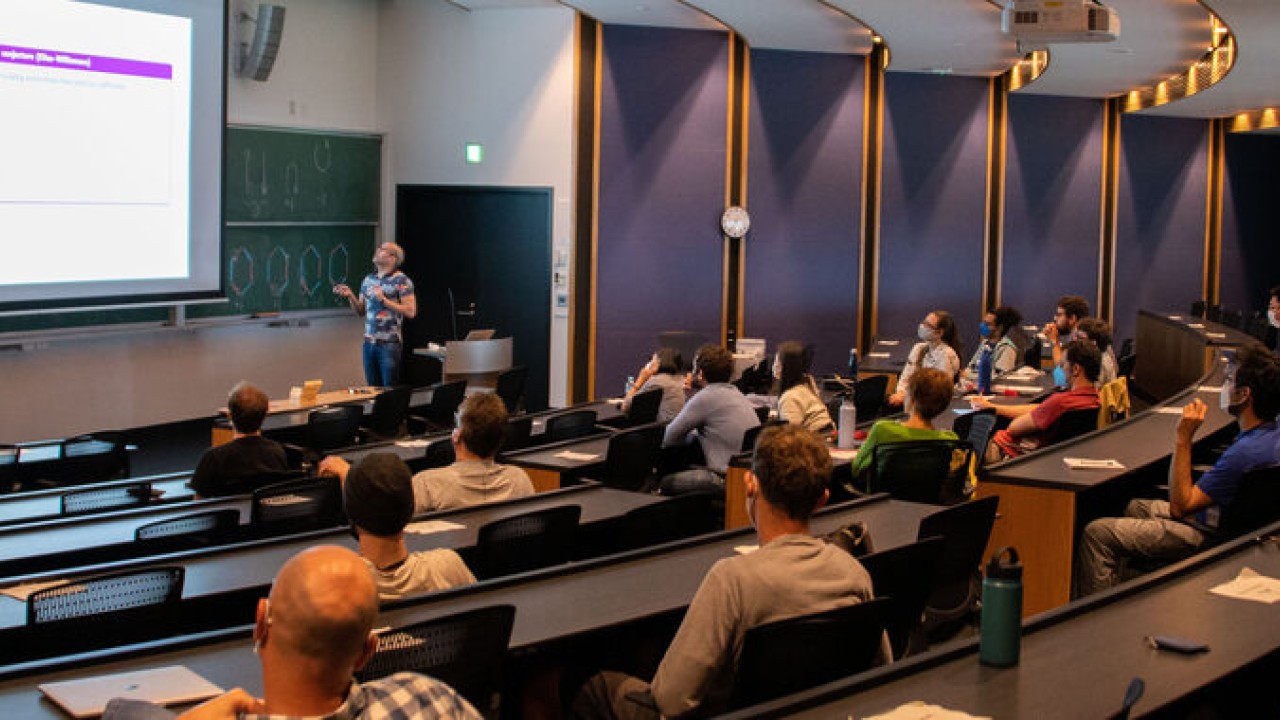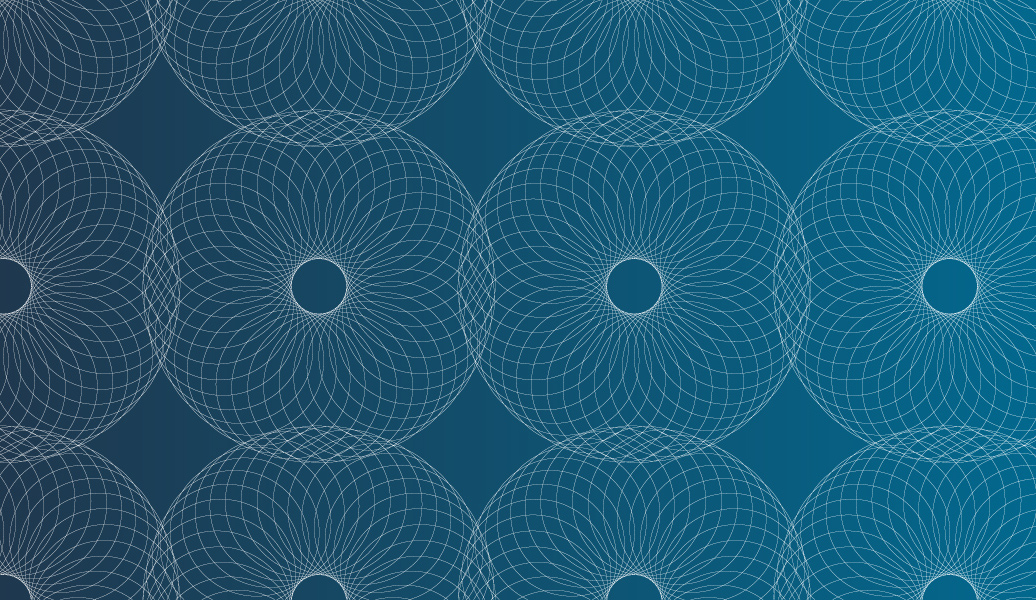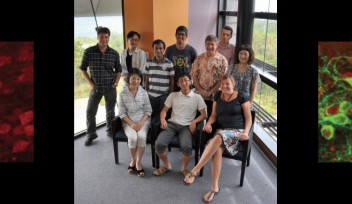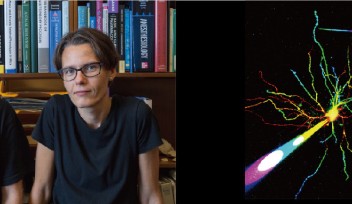OIST launches new Theoretical Sciences Visiting Program

Science thrives on academic discussion, from small debates between colleagues and collaborations between individual research units, to conferences and even visiting programs, where academics travel to another institute for a long-term stay.
Now, OIST has launched a Theoretical Sciences Visiting Program, aimed at bringing a diverse group of exceptional theoretical scientists to OIST, including mathematicians, physicists, life scientists and computer scientists.
"From the early days of OIST, we've seen that it’s a place people really love to visit,” said Professor Nic Shannon, Principal Investigator in the OIST Theory of Quantum Matter Unit and chair of the Theoretical Sciences Visiting Program Establishing Committee. “There was an obvious opportunity to build a visiting program, and we wanted to make this as inclusive as possible, so scientists from any theoretical discipline can apply.”
Around the globe, visiting programs have proven a success story for driving progress in the theoretical sciences, with prominent examples including the Institute of Advanced Studies in Princeton, the Isaac Newton Institute in Cambridge, the Kavli Institute for Theoretical Physics in Santa Barbara, and the Max Planck Institute for Mathematics in the Sciences in Leipzig.
"The concept of these places is that they act as a home away from home,” explained Prof. Shannon. “People can visit individually, but critically, they can also come in groups. You can bring together the experts in a field – which may be highly specialized – and they can interact with each other, away from teaching and administrative pressures, and generate new ideas. Hosting such programs brings considerable prestige and creates opportunities for OIST researchers to learn about new developments, share their ideas, and collaborate with participants.”
OIST’s Executive are also enthusiastic: “I am pleased to strongly support our Theoretical Sciences Visiting Program,” said Dr. Peter Gruss, OIST President and CEO. "It provides a place where scholars from around the world meet, discuss, and work together with OIST scientists. This program brings fresh ideas to the Institute’s research and provides opportunities for interdisciplinary and international networking.”
Calls for visitors began in the summer of 2021, with the applications reviewed by the Visitor Selection Committee, chaired by Professor Tomoki Fukai. But only now, as pandemic border restrictions have eased, have the first visitors begun to arrive on campus.
The first visitor to reach OIST was Dr. Danny Bulmash, a theoretical physicist from the University of Maryland who is staying at OIST for three months. Dr. Bulmash works in the broad field of Condensed Matter with a focus on topological phases.
Essentially, I work with materials with really robust properties – properties that remain quantitatively unchanged even when you modify the details of the material,” he explained.

In classic topology, a well-known analogy is that of a coffee mug, which can be deformed into the shape of a donut. From a topological point of view, the two structures are the same with a shared robust property – both structures only have one hole.
Instead of looking at shapes, Dr. Bulmash studies quantum properties, such as electrical conductivity and the magnetism in certain materials. While his work is purely theoretical, there are intriguing prospects for applying these concepts in the future, including the use of topological phases in quantum computing, where robust ‘quantumness’ could be an advantage.
Since coming to OIST, Dr. Bulmash has begun discussions with numerous units at OIST, including Professor Yoshinori Okada’s Quantum Materials Science Unit, and Prof. Shannon’s Theory of Quantum Matter Unit.
"I want to talk to a wide range of people at OIST and learn about areas that are more of a focus here than at home. It’s exciting to explore areas outside my direct field,” said Dr. Bulmash. “I hope to find a long-term collaborator or two while I’m here.”
The second visitor to arrive at OIST was Dr. Chris Bowman, a Reader in Pure Mathematics at the University of York, in the field of categorification.
"My research involves taking old questions from classical mathematics about structures that haven’t yet been possible to solve and making these structures ‘richer’. We can then look back at the ‘shadow’ this new structure casts on the old structure to help us find the answers,” he explained.

While COVID-19 shortened his time at OIST down to just one month, he spent his time closely collaborating with the Representation Theory and Algebraic Combinatorics Unit, which is led by Professor Liron Speyer, and kickstarted a new project that they will work on over the next couple of years.
"It’s been great to finally get to OIST,” he said, in an interview during his visit. “Starting a new project really requires in-person work. Here, we can take a room full of blackboards and there’s lots of space to work. When you are working on zoom with a tiny little screen, it’s harder to connect the dots and get the ideas flowing.”
As well as Dr. Bulmash and Dr. Bowman, four more visiting academics are expected to arrive in May.
“Overall, we plan to have 25 visitors in total coming to OIST during this fiscal year, staying for a period of between two months to a year,” said Dr. Jonas Fischer, the newly appointed Academic Coordinator of the Theoretical Sciences Visiting Program.

Previously, Dr. Fischer worked as Program Coordinator at the Tohoku Forum for Creativity. Now at OIST, he oversees the process of bringing visitors to Okinawa and organizing events for the program. While the program is still in its early stages, it is expected to grow considerably in the coming years.
"Our long-term target is to bring between 100-120 visitors to OIST each year. Not all of these will be long-term visitors, instead, we want to incorporate residential workshops, where numerous participants come to OIST for a shorter period of time to discuss a particular field,” said Dr. Fischer. “We are also planning a series of events for the OIST community, based around the visiting program, including regular Thursday afternoon talks by visiting scientists, which will be aimed at a general audience.”
Once the new laboratory – Lab 5 – is completed, the Theoretical Sciences Visiting Program will have a dedicated space at OIST, with the layout designed to promote spontaneous exchange.
"OIST mostly has open-plan offices for private work, with closed rooms for meetings, but we wanted to try something more inclusive,” said Prof. Shannon. “We are excited that the space for the visiting program will be based around a public discussion area, surrounded by private offices for individual work. And we hope that members of OIST will feel free to call by.”
###
Calls for visitors and applications for programmatic activity for fiscal year 2023 will begin later this year. Please see the Theoretical Sciences Visiting Program webpages for more details.
For press enquiries:
Press Inquiry Form













